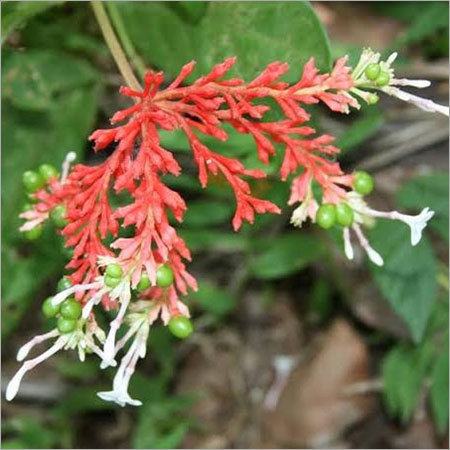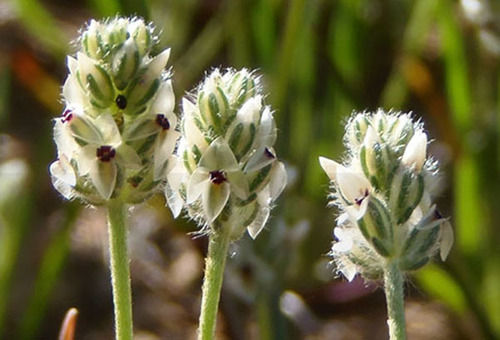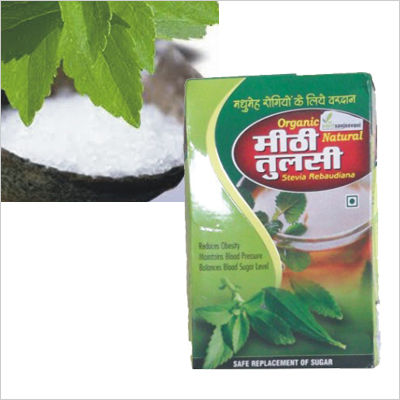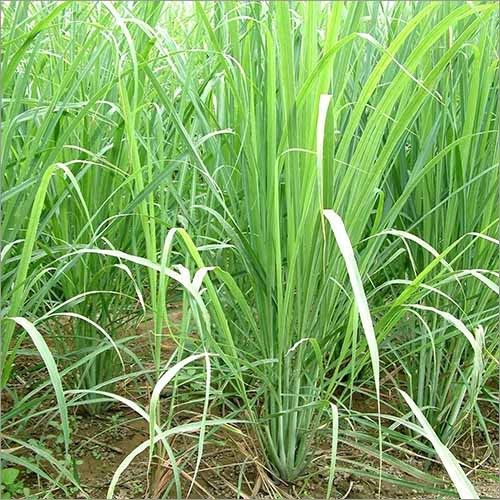Sarpagandha Plants Price And Quantity
- 5 INR/Plant
- 15000 Plant
- 4.00 - 5.00 INR/Plant
Sarpagandha Plants Trade Information
- 1000000 Plant Per Month
- 10 Days
Product Description
We are capable of supplying the premium Sarpagandha Plants, which is available from our comprehensive inventory located at Udaipur (India). Considered as one of the prestigious names in the agricultural sector, we are putting forward excellent quality Sarpagandha Plants also known as Rauwolfia serpentina.
More Detail:
- Sarpagandha (Rauvolfia serpentina) is the best suitable to use in Ayurveda, folk and Unani medicines and in conventional western medicine as well. It is also recognized as Indian Snakeroot; in Sanskrit as Sarpakshi, Patalguruda, Sarpagandha, Chandrika; in Hindi as Sarpagandha, Chota-chand, Chandrabhaga; in Assamese as Arachoritita; in Kannada as Sarpagandhi, Sarpangandha, Shivanabhiballi, Patalagandhi, Sutranavi; in Bangla as Chandra; in Malayalam as Suvapavalporiyam, Churannavilpori; in Tamil as Chevanamalpodi; in Marathi as Harkaya: Harki; and in Telugu as Patalaguni, Sarpagandha, Patalagaruda.
- This plant contains so many bioactive chemicals, comprising deserpidine, rescinnamine, ajmaline, yohimbine and serpentinine. The alkaloids in the plant is useful in reducing depress activity of central nervous system, blood pressure, and acts as hypnotics.
- The useful parts of the plant are leaves & roots. As per the Ayurveda the root is acrid, bitter, sharp, anthelminic and pungent. Rauvolfia preparations are utilized as sedative and as anti-hypertensive. Also, it is ideal to be utilized in the treatment of varied central nervous system disorders associated with insanity, insomnia, psychosis, schizophrenia, and epilepsy.
Market Potential : The natural reserves of the plant are rejecting as a result of over-harvesting particularly after its medicinal properties reports appeared in the literature. International Union for the Care of Nature & Natural Resources (IUCN) has put such plant under the risk status. Importers, purchaser within the nation, traditional practitioners, processors, Ayurvedic & Siddha drug producers throng the markets for purchasing of this plant every year. The domestic demand of this is quite large. As the yield is much less across India, the internal market itself is very much potential.
Basis & Presumption :
- The agricultural field and associated related infrastructure is accessible with the entrepreneur.
- Prices are calculated according to the current market rates.
- The yields depending upon appropriate implementation of package of practices.
- Economics of cultivation greatly makes better on scale of operation.
- This activity offers tax-free good returns. Moreover, many government support schemes are accessible. Latest provisions require to be examined up.
- Market for medicinal plants is economics and volatile may change from time to time.
Agri practices : This plant is an erect everlasting shrub with a long, nodular, irregularly, and yellowish root stock. The leaves are bright green, lanceolate, and long. They are born on stem in spiral of three. The flowers are white or pink and are found in groups. The fruits of the plant are globose, small; initially greenish purple colour but in the end turning blackish once ripe. Flowering time is March to May in Indian weather conditions.
Soil & Climate : The sandy loam to moderate black cotton soils excellent in organic content with pH 6 to 8 and fine drainage facility are perfect. It develops in a large range of weather conditions but flourishes nicely under hot humid tropical weather conditions in open / partial shade. Heights of 1300 meter having a temp. range of 10 oC to 38 oC and yearly rainfall of 2500mm are the best to this kind of species. Good yield is got in regions less prone to frost and having less bad winter.
Land Preparation : The field is cultivated deep in May Month and left for weathering. After pre-monsoon rains FYM is complied followed by 2nd cultivating and 2 cross harrowing in order to break the clods. The field is dressed by planking in the end, and beds are kept out. Nursery should be lifted in a partly shaded area with suitable watering facility. Each bed should be around 1.5m large, 150 to 200 mm high and of easy length. Beds along with shallow furrows 80 to 100 mm aside are made in April and irrigated.
Propagation :
- About 5 to 7 kg seeds are needed to sow 1 hectare area. Fresh seeds are selected for sowing as their viability lasts for only six months. It has been noticed that the seeds stored for over one year are hard to germinate. Hence, it is necessary that seeds gathered between September to December should be applied for sowing in the following season. These Seeds are checked with Thiram (2 to 3 g/kg seed) after absorbing in water for one day and sown from the end of April to the very first week of May at a distance of 8 to 10 cm & 1 to 2 cm deep. They are hidden with a blend of FYM & soil and watered everyday. Germination is done in 30 to 35 days. The germination percentage changes from 10% to 50%.
- Also, it can be propagated by vegetative means utilizing root & stem cuttings and root stumps. Root harvesting 30 to 50 mm long and not exceeding 125 mm dia. are sown in June to July and are covered thoroughly with the soil leaving only 10mm above the land. The harvesting sprout within 21 days in case of good moisture. Success percentage is 50 - 80% and around 100 kilogram of root cuttings are needed to sow 1 hectare land. Stem-cuttings around 150 to 200 mm long with 3 to 4 nodes are sown in the nursery in June month and laid moist until they seedling. Cuttings treated with IAA (30 ppm) initiate rooting in 2 weeks. The success ratio got in stem harvesting is around 65%. In case of root stumps, approx. 50 mm roots with a area of stem above the collar are sown in May to June in watered lands. Although around 90 to 95 % of success is got in this technique, only one plant can be lifted from an individual stump.
- Sprouts, 40 to 50 day old bearing 4 to 6 leaves, are available for transplantation in the 1st week of July. These sprouts are uprooted & treated with Bavistin 0.1% for half an hour and thereafter transplanted at a distance of 450 x 300 mm in the key land. This is followed by a light watering. Around 10 to 15 % of the sprouts are retained for distance filling 10 to 15 days after sowing.
Fertilizer : Commonly organic cultivation is used. Prior to sow 10 to 15 tonnes of farm yard manure per hectare is utilized. In the nursery, FYM (1/3rd of suggested dose) along with 2/3rd of soil blended with 10% B.H.C at the rate of 20 kg/hectare is needed. 30 kg Nitrogen and 30 kg Phosphorus and Potash per hectare are essential. During planting, 1/3rd of Nitrogen and the whole dose of Potash & Phosphorus are used in 450mm from the rows and 70 to 100mm deep. 50 days after planting 2/3rd Nitrogen is used in and the remaining Nitrogen is fertilized in up coming rainy season.
Irrigation
- Around 15 to 16 irrigations are essential. Irrigation is needed two time in a month at the time of hot dry weather condition and once in a month in the winter season.
- Being a long duration crop & slow in development in the initial levels, it can be inter-cropped. Vegetables like cabbage, okra, brinjal, and soybean may be sown in Kharif.
Weed Control : 2 weedings in the 1st year and 1 weeding in the 2end year followed by 1 hoeing usually at the initial stage of the developing season are needed. Flowers sprouting on very young plants should be nipped in order to promote root development.
Pest control : The key pest controlling agents are used to kill its key pests like grub, moth, black bug and weevils. Some of the pest controlling chemicals we use in the development of this plant are BHC 10 %, Asataf 10g / 10 L of water, etc. Diseases like Anthracnose, Leaf spot, and Dieback are known to reason of damaging to this crop. Dieback & Leaf spot can be controlled with the spray of 0.2% Dithane Z-78 or DM-45 in early June prior to come of monsoon and repeat the spray at monthly gaps until November. Anthracnose can be controlled with of spray of Blitox 50WP @ 40g in 10L of water.
Harvesting : The crop of the plant is ready for uprooting after 1 1/2 years of planting when the alkaloid material is maximum, that is 1.4%. It is watered 8 to 10 days before uprooting and the above land foliage is harvested and roots are selected out 5.0 Post harvest operations.
Drying : The roots are washed, dried and cleaned in shade till the moisture content decreases to about 8%. As the outer skin has about 80 per cent of the enter alkaloid, the skin shouldn't be damaged at the time of cleaning the roots. Brown to black shaded seeds, which show from August - December are gathered and absorbed in water for 15 to 20 hours and rubbed with both hands in order remove seed coat. The seeds are washed three times, and dried. Dried seeds are kept in moisture resistant place for next planting. The weight of 100 seeds is about 3.5 to 4 g.
Yield : Average yield per acer is 2000 kg dried roots and 200 kg seeds.
Economics of one acer sarpgandha cultivation Expenses :
- Sarpgandha plant one acer 20,000 plant * 7 Rs.per plant = Rs 1,40,000/- ( including plants, transportation,supervision, consultancy)
- Per acre fertilizer one year. = Rs.20,000/-
- Land development = Rs.10,000/-
- Labour in plantion = Rs.15000/-
- Total expenses = Rs.1,85,000/-
Income :
- 100 k.g. seed within the first year of plantation.
- In total two year income 200 k.g.seeds * 1500 rs.per k.g.buy back = Rs. 3,00,000 /-
- 2000 k.g. dried roots within the second year of plantation.
- 2000 k.g.dried roots * 300 Rs.per Kg buy back = Rs. 6,00,000 /-
- Two Years Total Income = rs. 9,00,000/-
- Expenses = - Rs.1,85,000/-
- Net Profit = Rs. 7,15,000/-
Sarpgandha material available :
- Sarpgandha Plant
- Sarpgandha Seeds
- Sarpgandha Dry Roots
- Sarpgandha Dry leaves






